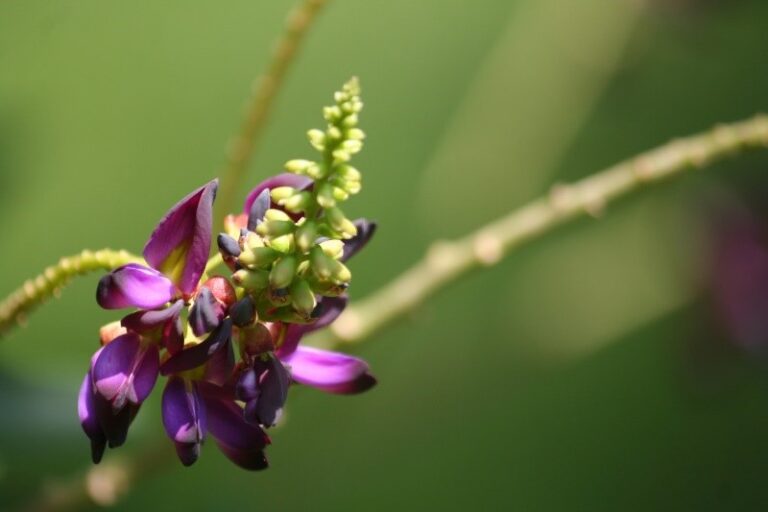Reshma Tendulkar1,*, Shefali Patil2, Neha Sawant2 and Bhairavee Chimane2
1Pharmaceutical Chemistry, University of Mumbai; reshma.tendulkar@ves.ac.in
2VES college of pharmacy, Chembur; shefali.patilmp2021@ves.ac.in; neha.sawantmp2021@ves.ac.in; bhairavee.chimanemp2021@ves.ac.in
*Correspondence: Reshma Tendulkar reshma.tendulkar@ves.ac.in
– published as a website article, to be included in Volume 1, Issue 1 of the AIDASCO Reviews –
ABSTRACT: Endometriosis is the proliferation of various tissues that resemble the uterine lining; these tissues develop inside lower abdominal reproductive organs, such as the ovaries, fallopian tubes, tissues that support the uterus, and other uterine surface regions. The lungs, brain, and skin are examples of non-pelvic tissues where spreadability was seen. However, endometrial-problem may also result in Ovarian Cancer and breast cancer if proper treatment of endometriosis in women is ignored. In conventional pharmaceutical therapies, nonsteroidal anti-inflammatory drugs, as well as androgens, aromatase inhibitors, selective progesterone receptor modulators, oral contraceptives, and gonadotropin-releasing hormone agonists, are used.
Keywords: Endometriosis; Disease of women; Disease therapy.
1. Introduction
Endometriosis is characterized by the growth of tissue that resembles endometrium outside the uterus. About 10% of women of reproductive age are affected, mostly [1]. According to estimates, endometriosis affects 1 in 9 women of reproductive age in Australia and the United States [2]. Tissue from the uterus migrates and implants itself in other parts of the body due to endometriosis [3]. This tissue interacts with the body’s neurological, endocrine, muscular, skeletal, and vascular systems, leading to various uncomfortable symptoms and physiological changes [4]. Dysmenorrhea, discomfort from endometriosis, and infertility are the three main signs and symptoms of endometriosis [5]. Also, surgery can be an option as one of the treatments [6]. Due to synthetic medications’ negative impacts and toxicity, natural products have played a significant role in human medical care. Approximately 80% of people worldwide seek primary care using traditional methods. Additionally, several contemporary medications used to treat human and animal ailments are derived from plants [7]. The use of traditional herbs in combination with modern medicines can provide a synergistic effect, and also herbs could help in analyzing new drug targets in the treatment of endometriosis.
2. Pathogenesis of Endometriosis
2.1. Endometriosis propagation factors
Oxidative stress and inflammation. Reactive oxygen species contribute to endometriosis development, maintenance, and symptoms, causing lipid peroxidation that leads to DNA damage in endometrial cells [8-10].
Immune Dysfunction. Consequently, women with endometriosis have higher expression of cytokines and vascular endothelial growth factors in their peritoneal fluid, which promotes the proliferation of endometrial cells and angiogenesis [11, 12].
Apoptosis Suppression and Alteration of Endometrial Cell Fate. Apoptosis suppression and oxidative stress and inflammation are interlinked, which pro-motes down-regulation of the apoptotic pathway.
Genetics. Familial aggregation is assumed to be the genetic basis for endometriosis development. The genes that code for detoxifying enzymes, estrogen receptor polymorphism, and innate immune system genes have all been linked to the pathophysiology of endometriosis.
Stem Cells. The condition is marked by altered stem cell motility and engraftment. Endometriosis prevents normal stem cell trafficking to the uterus, which is required for endometrial development and repair and is essential to the cyclic regeneration of a healthy endometrium [13].
3. Symptoms and Diagnosis
Endometriosis patients frequently have chronic pain during their menstrual cycle, as well as non-menstrual acyclic pain, dysmenorrhea, pelvic discomfort, dyspareunia, dysuria, and mental health problems [14]. Depending on the cyst, pain may develop in the thigh, back, and perineum during urination [15]. Endometriosis patients’ daily lives and activities are negatively impacted by psychological stress, low self-esteem, sadness, and anxiety. The social wellbeing of a person is influenced by physical and mental illness. Daily work performance can be affected by persistent menstruation pain [16]. It harms sleep quality, physical and psychological health, and social and emotional wellbeing. In the case of endometriosis, pain during sexual contact will result in female sexual dysfunction, decreasing desire and leading to relationship disputes [17].
Up to 44% of women with endometriosis have ovarian endometriomas. Laparoscopic inspection with histologic confirmation following biopsy is the basis for this disease’s diagnosis [18, 19]. The extended period without a diagnosis may cause treatment to be delayed, with clinical implications for chronic pain and an undetermined impact on fertility results. People with endometriosis spend more time and money and frequently have a lower quality of life due to longer diagnosis delays [20]. Medical professionals make preliminary diagnoses based on signs and symptoms, physical exams, imaging studies, and how patients respond to therapy; however, the gold standard is a surgical evaluation with adjunct histological analysis [21]. Because of its inefficiencies and hazards, the requirement for a surgical diagnosis has been contested [22]. For patients, clinicians, and healthcare systems, this norm creates a barrier that makes diagnosing it more difficult. Delays and more extended periods to diagnosis are consequently experienced globally by adults and adolescents with endometriosis. Many endometriosis patients have no symptoms at all. A thorough clinical history and imaging diagnostic should be used to identify patients at risk because a diagnosis based on the severity of the symptoms can be deceptive [23]. Transvaginal sonography (TVS) ought to be the first method of diagnosis for patients who are thought to have deep pelvic endometriosis. TVS is more effective in diagnosing endometriosis cysts, while MRI is more effective at diagnosing endometriosis lesions in the bladder, intestine, and uterosacral ligaments. MRI should be the imaging method for identifying rectovaginal septum nodules, intestinal nodules, or rectal nodules [24].
4. Treatment
4.1. Modern medicines available
Currently, there is sufficient inventory for treating endometriosis medically, including progestin-only treatments, combined estrogen and progestin contraceptives, and gonad-otrophin-releasing hormone (GnRH) agonists and antagonists. Contrary to common opinion, no medical therapy has ever been more successful than another for treating endometriosis pain [25]. If treating a patient has a suggestive history, hormonal contraceptives are the first line of treatment. Furthermore, if hormonal contraceptives are ineffective or no longer offer relief, it is appropriate to consider surgery as a therapeutic option [26]. Cytoreductive surgery will help people with certain endometriosis. For patients with little to no endometriosis, the harm is compounded by “treating” them for an extended length of time with drugs that have serious side effects or by failing to find the underlying cause of their discomfort. Due to the numerous significant adverse effects present (massive hemorrhage, perimenopausal stage symptoms, masculinizing manifestations, and liver damage), the long-term administration of these medicines is still challenging. The conditions differ if patients enter menopause or have a hysterectomy [27].
4.2. Herbs used to treat Endometriosis
Since ancient times, people have used phytomedicine worldwide to heal or prevent human disease. Herbal extracts are multi-component combinations that are pretty complicated. Therefore, the combined effects of their distinct parts may be very advantageous [28]. Hence they are evaluated for both studies that are in vitro and in vivo [29].

In addition, animals that received a 5-week oral PFE treatment regimen starting a week before receiving endometrial fragments showed fewer newly forming endometriotic lesions than vehicle-treated controls. These findings imply that PFE has therapeutic potential for preventing and managing endometriosis [29].
Cinnamon Bark. In traditional Chinese medicine, cinnamon (Figure 2) is utilized to aid endometriosis patients’ circulation. Vasodilation of peripheral blood arteries and inhibition of platelet aggregation is thought to be how it achieves this. Additionally, cinnamon treats several female reproductive issues, including stomach pain, peptic ulcer disease, diarrhea, colds, and hypertension [32].

Salvia root. Salvia root, also called red sage, is claimed to stimulate circulation and hasten blood flow during endometriosis treatment. Superoxide dismutase activity in platelets increases, which decreases radicals and platelet activation [33]. Salvia root was shown to increase the expression of genes of IL-2 receptors in peripheral blood mononuclear cells when combined with another Chinese herb, indicating a potential impact on cell-mediated immunity [34].

Liquorice. One of the most famous traditional medicines for boosting the immune system is licorice. It is said to restore Energy, eliminate heat, and lessen discomfort [35]. The change of cortisol to cortisone has an anti-inflammatory effect. Additionally, licorice encourages mouse thymocyte proliferation and IL-2 production. Additionally, phospho-lipase A2 and prostaglandin synthesis in female uterus endometrium in vitro were reported to be inhibited by licorice root (Figure 3) [36].
5. Conclussion
In summary, traditional herbs can have a beneficial synergistic impact when used with current medications. They can also be used to identify potential novel therapeutic targets for the treatment of endometriosis. Using herbs alongside current medicines will increase the benefits of these alternative medical interventions to patients with endometriosis worldwide. Herbs like extract of Pueraria flower, Cinnamon Bark, Salvia root, and Liquorice may effectively modulate the advancement of endometriosis as this herb holds therapeutic potential for the prevention and management of endometriosis, Vasodilation of peripheral blood arteries and inhibition of platelet aggregation, stimulate circulation and hasten blood flow, and are most popular traditional medicines for boosting the immune system. To better serve patients and increase the usefulness of combination therapy, which offers promising results in improving patients’ lives according to evidence that is now available, it is determined that patients with endometriosis must choose this therapy of herbs and current drugs.
INFORMATION ABOUT FIGURES
Image for Figure 1 created by mariastone, downloaded from Pixabay. Please consider supporting this author by visiting the following link https://pixabay.com/users/mariastone-533187/
Image for Figure 2 created by weinstock, downloaded from Pixabay. Please consider supporting this author by visiting the following link https://pixabay.com/users/weinstock-25534/
Image for Figure 3 created by gate74, downloaded from Pixabay. Please consider supporting this author by visiting the following link https://pixabay.com/users/gate74-5942741/
References
[1] D. R. Kalaitzopoulos et al., “Treatment of endometriosis: a review with comparison of 8 guidelines,” BMC Women’s Health, vol. 21, no. 1. BioMed Central Ltd, Dec. 01, 2021. doi: 10.1186/s12905-021-01545-5.
[2] G. M. Buck Louis et al., “Incidence of endometriosis by study population and diagnostic method: The ENDO study,” Fertil Steril, vol. 96, no. 2, pp. 360–365, Aug. 2011, doi: 10.1016/j.fertnstert.2011.05.087.
[3] R. O. Burney and L. C. Giudice, “Pathogenesis and pathophysiology of endometriosis,” Fertility and Sterility, vol. 98, no. 3. pp. 511–519, Sep. 2012. doi: 10.1016/j.fertnstert.2012.06.029.
[4] K. Ellis, D. Munro, and J. Clarke, “Endometriosis Is Undervalued: A Call to Action,” Front Glob Womens Health, vol. 3, May 2022, doi: 10.3389/fgwh.2022.902371.
[5] J. Brown and C. Farquhar, “Endometriosis: An overview of Cochrane Reviews,” Cochrane Database of Sys-tematic Reviews, vol. 2014, no. 3. John Wiley and Sons Ltd, Mar. 10, 2014. doi: 10.1002/14651858.CD009590.pub2.
[6] G. A. J. Dunselman et al., “ESHRE guideline: Management of women with endometriosis,” Human Reproduc-tion, vol. 29, no. 3, pp. 400–412, 2014, doi: 10.1093/humrep/det457.
[7] M. Ilhan, F. T. Gürağaç Dereli, and E. K. Akkol, “Novel Drug Targets with Traditional Herbal Medicines for Overcoming Endometriosis,” Curr Drug Deliv, vol. 16, no. 5, pp. 386–399, Dec. 2018, doi: 10.2174/1567201816666181227112421.
[8] G. Scutiero et al., “Oxidative Stress and Endometriosis: A Systematic Review of the Literature,” Oxidative Medicine and Cellular Longevity, vol. 2017. Hindawi Limited, 2017. doi: 10.1155/2017/7265238.
[9] A. W. Nap, P. G. Groothuis, A. Y. Demir, J. L. H. Evers, and G. A. J. Dunselman, “Pathogenesis of endometri-osis,” Best Practice and Research: Clinical Obstetrics and Gynaecology, vol. 18, no. 2. Bailliere Tindall Ltd, pp. 233–244, 2004. doi: 10.1016/j.bpobgyn.2004.01.005.
[10] S. Sourial, N. Tempest, and D. K. Hapangama, “Theories on the Pathogenesis of Endometriosis,” Int J Reprod Med, vol. 2014, pp. 1–9, 2014, doi: 10.1155/2014/179515.
[11] J. Mclaren, A. Prentice, D. S. Charnock-Jones, and S. K. Smith, “Vascular endothelial growth factor (VEGF) concentrations are elevated in peritoneal fluid of women with endometriosis.” [Online]. Available: https://academic.oup.com/humrep/article/11/1/220/595874
[12] M. W. Laschke, C. Giebels, and M. D. Menger, “Vasculogenesis: A new piece of the endometriosis puzzle,” Human Reproduction Update, vol. 17, no. 5. pp. 628–636, Sep. 2011. doi: 10.1093/humupd/dmr023.
[13] D. Hufnagel, F. Li, E. Cosar, G. Krikun, and H. S. Taylor, “The Role of Stem Cells in the Etiology and Patho-physiology of Endometriosis,” Semin Reprod Med, vol. 33, no. 5, pp. 333–340, Sep. 2015, doi: 10.1055/s-0035-1564609.
[14] S. Vannuccini, S. Clemenza, M. Rossi, and F. Petraglia, “Hormonal treatments for endometriosis: The endo-crine background,” Reviews in Endocrine and Metabolic Disorders, vol. 23, no. 3. Springer, pp. 333–355, Jun. 01, 2022. doi: 10.1007/s11154-021-09666-w.
[15] J. Nawrocka-Rutkowska, I. Szydłowska, A. Rył, S. Ciećwież, M. Ptak, and A. Starczewski, “Evaluation of the diagnostic accuracy of the interview and physical examination in the diagnosis of endometriosis as the cause of chronic pelvic pain,” Int J Environ Res Public Health, vol. 18, no. 12, Jun. 2021, doi: 10.3390/ijerph18126606.
[16] O. T. Sims, J. Gupta, S. A. Missmer, and I. O. Aninye, “Stigma and endometriosis: A brief overview and rec-ommendations to improve psychosocial well-being and diagnostic delay,” International Journal of Environ-mental Research and Public Health, vol. 18, no. 15. MDPI, Aug. 01, 2021. doi: 10.3390/ijerph18158210.
[17] L. della Corte et al., “The burden of endometriosis on women’s lifespan: A narrative overview on quality of life and psychosocial wellbeing,” International Journal of Environmental Research and Public Health, vol. 17, no. 13. MDPI AG, pp. 1–17, Jul. 01, 2020. doi: 10.3390/ijerph17134683.
[18] Z. Guleken, H. Bulut, J. Depciuch, and N. Tarhan, “Diagnosis of endometriosis using endometrioma volume and vibrational spectroscopy with multivariate methods as a noninvasive method,” Spectrochim Acta A Mol Biomol Spectrosc, vol. 264, Jan. 2022, doi: 10.1016/j.saa.2021.120246.
[19] S. Kennedy et al., “ESHRE guideline for the diagnosis and treatment of endometriosis,” Human Reproduction, vol. 20, no. 10. Oxford University Press, pp. 2698–2704, 2005. doi: 10.1093/humrep/dei135.
[20] M. G. Cromeens, E. T. Carey, W. R. Robinson, K. Knafl, and S. Thoyre, “Timing, delays and pathways to di-agnosis of endometriosis: A scoping review protocol,” BMJ Open, vol. 11, no. 6. BMJ Publishing Group, Jun. 24, 2021. doi: 10.1136/bmjopen-2021-049390.
[21] K. E. Nnoaham et al., “Impact of endometriosis on quality of life and work productivity: A multicenter study across ten countries,” Fertil Steril, vol. 96, no. 2, 2011, doi: 10.1016/j.fertnstert.2011.05.090.
[22] S. K. Agarwal et al., “Clinical diagnosis of endometriosis: a call to action,” Am J Obstet Gynecol, vol. 220, no. 4, pp. 354.e1-354.e12, Apr. 2019, doi: 10.1016/j.ajog.2018.12.039.
[23] E. Denny and C. H. Mann, “Endometriosis and the primary care consultation,” European Journal of Obstetrics and Gynecology and Reproductive Biology, vol. 139, no. 1, pp. 111–115, 2008, doi: 10.1016/j.ejogrb.2007.10.006.
[24] A. Baușic et al., “Transvaginal Ultrasound vs. Magnetic Resonance Imaging (MRI) Value in Endometriosis Diagnosis,” Diagnostics, vol. 12, no. 7. MDPI, Jul. 01, 2022. doi: 10.3390/diagnostics12071767.
[25] “THE AMERICAN COLLEGE OF OBSTETRICIANS AND GYNECOLOGISTS.”
[26] F. W. Ling, “Randomized Controlled Trial of Depot Leuprolide in Patients With Chronic Pelvic Pain and Clinically Suspected Endometriosis,” 1999.
[27] K. Patzkowsky, “Rethinking endometriosis and pelvic pain,” Journal of Clinical Investigation, vol. 131, no. 20. American Society for Clinical Investigation, 2021. doi: 10.1172/JCI154876.
[28] X. Zhou et al., “Synergistic effects of Chinese herbal medicine: A comprehensive review of methodology and current research,” Frontiers in Pharmacology, vol. 7, no. JUL. Frontiers Research Foundation, Jul. 12, 2016. doi: 10.3389/fphar.2016.00201.
[29] G. F. Meresman, M. Götte, and M. W. Laschke, “Plants as source of new therapies for endometriosis: A re-view of preclinical and clinical studies,” Human Reproduction Update, vol. 27, no. 2. Oxford University Press, pp. 367–392, 2021. doi: 10.1093/humupd/dmaa039.
[30] X. Chen, J. Yu, and J. Shi, “Management of diabetes mellitus with puerarin, a natural isoflavone from pueraria lobata,” American Journal of Chinese Medicine, vol. 46, no. 8. World Scientific Publishing Co. Pte Ltd, pp. 1771–1789, 2018. doi: 10.1142/S0192415X18500891.
[31] J. H. Kim, J. H. Woo, H. M. Kim, M. S. Oh, D. S. Jang, and J. H. Choi, “Anti‐endometriotic effects of pueraria flower extract in human endometriotic cells and mice,” Nutrients, vol. 9, no. 3, Mar. 2017, doi: 10.3390/nu9030212.
[32] C. W. Fetrow and J. R. Avila, Professional’s handbook of complementary & alternative medicines. Lippincott Wil-liams & Wilkins, 2004.
[33] C. K. Wong, P. S. Tse, E. L. Y. Wong, P. C. Leung, K. P. Fung, and C. W. K. Lam, “Immunomodulatory effects of Yun Zhi and Danshen capsules in health subjects – A randomized, double-blind, placebo-controlled, crossover study,” Int Immunopharmacol, vol. 4, no. 2, pp. 201–211, Feb. 2004, doi: 10.1016/j.intimp.2003.12.003.
[34] C. Burks-Wicks, M. Cohen, J. Fallbacher, R. N. Taylor, and F. Wieser, “A Western Primer of Chinese Herbal Therapy in Endometriosis and Infertility,” Women’s Health, vol. 1, no. 3, pp. 447–463, Nov. 2005, doi: 10.2217/17455057.1.3.447.
[35] “NII-Electronic Library Service.”
[36] E. P. Gomez-Sanchez and C. E. Gomez-Sanchez, “Central hypertensinogenic effects of glycyrrhizic acid and carbenoxolone.”
